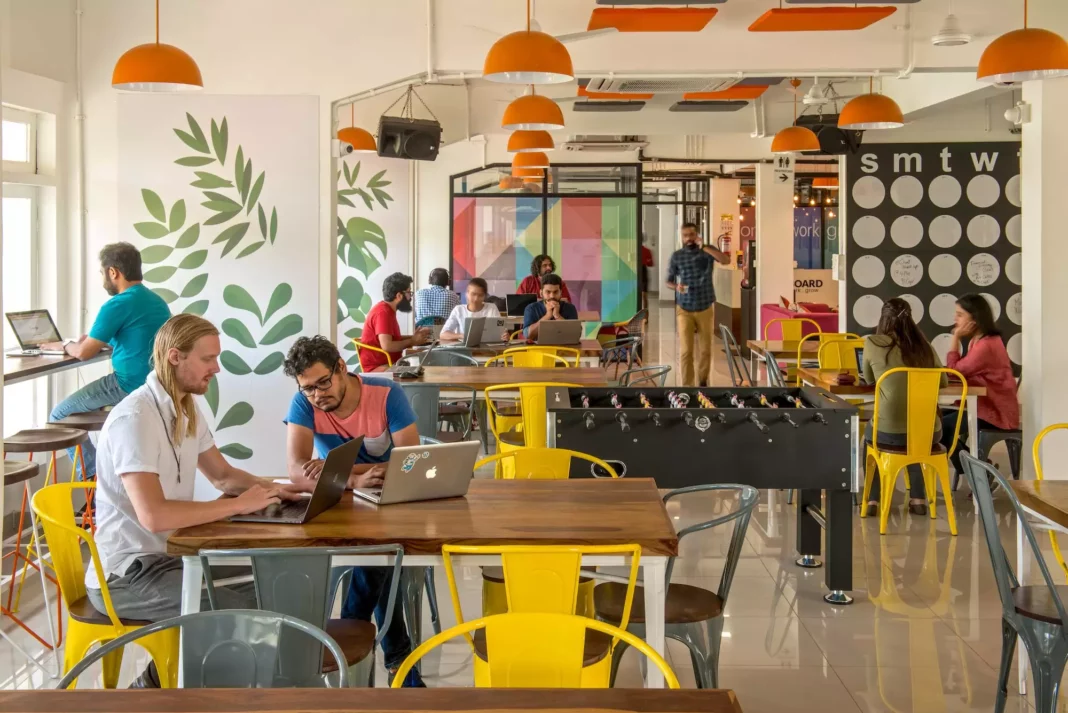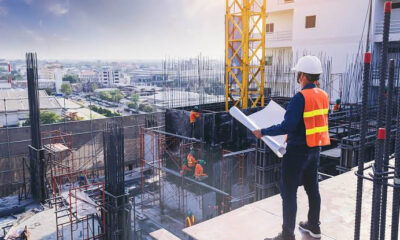News
Coworking Drives Commercial Real Estate Through Turbulent Times


By: Utkarsh Kawatra, CEO & Co-founder, myHQ (ANAROCK Group)


In FY2022- 2023, the Indian commercial real estate sector witnessed multiple highs and lows due to the global economic downturn. Although the early half of this period looked promising, it was followed by the tremors of a recession in key global economies. Consequently, companies stayed wary of leasing large corporate spaces, ultimately decelerating commercial office growth.
The Silver Lining – Flex Office Spaces
The contracting regular office real estate market found respite in the concurrent coworking sector’s expansion. While businesses around the world were looking for ways to cut costs, coworking did what it does best – provide flexible, expandable, and enterprise-level offerings to businesses that were seriously re-evaluating their options.
The Covid-19 pandemic had turned the tables on the regular office work model. Nevertheless, most people who had tasted the freedom of working from home soon grew tired of the lack of sociability and interaction. Simultaneously, many companies found that while WFH was too alien a concept for them to digest, there were definite advantages to not having to pay enormous permanent office rents.
The hybrid model of work took root as the perfect solution to everyone’s problem, and flexible office spaces provided the perfect recipe for an occupier comeback.
ANAROCK Research data shows that there has been a rather significant 12% decline in regular office leasing activity in the current fiscal year (FY23) compared to the peak year (FY20) when leasing stood at 43 mn sq. ft. across the top 7 cities. In FY23, leasing across the top cities stood at approx. 36.11 mn sq. ft.
Amid this decline in regular commercial office traction, coworking has performed remarkably well. Flexi office spaces’ share of office activity shot up to 23% in FY22-23 – a 11% surge against the 12% share in FY20. This substantial increase of 11% is the highest recorded growth across all office sectors.
Which cities contributed the most to this trend?
Pune tops out with coworking spaces occupying a transaction share of 40% in the current fiscal.
Bangalore comes next with the net absorption of coworking office spaces increasing to 30%. Interestingly, Bangalore’s coworking spaces and the IT/ITeS industry emerged as overall market leaders, owning 33% and 29% of the city’s commercial space demand respectively.
The trend is not limited to Bangalore. As more businesses seek flexible alternatives to fixed office expenditures, flex office spaces in Kolkata also account for sizeable transaction shares.
Dominating the office leasing scene in FY23, IT/ITeS occupiers took the lead in Kolkata office market, capturing a significant 36% transaction share. Following closely behind, coworking spaces secured a 21% share of the city’s office leasing activity, highlighting their growing popularity and demand in the City of Joy.
What the future holds?
The coworking sector will have an even bigger impact in the future, since the very DNA of work has undergone a fundamental change that will not reverse in the future. The changes in the way India Inc perceives office work post the pandemic are here to stay.
Many companies that insisted on their employees returning to office have learned to regret this decision, which itself was born out of an inability to move with the times. In the IT/ITeS space, massive layoffs have been matched by equally weighty attrition levels. In most respects, trying to go back to go back to the accustomed ‘old normal’ has had disastrous consequences.
As India maintains and amplifies its current edge as the bright spot among the world’s economies, coworking will play a central role. The future demand for flexi office spaces in the country is pegged to grow further by 15-20% over the next 2-3 years. However, the actual demand may well exceed this prediction.
-



 News4 weeks ago
News4 weeks agoKW Delhi 6 Mall Onboards New Brands
-



 News4 weeks ago
News4 weeks agoManasum Senior Living Launches IKIGAI GOA, A Senior Living Community in North Goa, in collaboration with Prescon Homes
-



 News4 weeks ago
News4 weeks agoBridging India Divide: Top 5 Tier- 2 Cities to Focus On
-



 News4 weeks ago
News4 weeks agoCommercial Realty Gets Tech Savvy: Fast Construction, Enhanced Convenience
-



 News3 weeks ago
News3 weeks agoGodrej Properties Sells Rs 3k cr+ Homes of Godrej Zenith, Gurugram, within 3 days
-



 News4 weeks ago
News4 weeks agoMultipoint Connection – A Definite Boon
-



 News3 weeks ago
News3 weeks agoRBI’s Status Quo on Key Policy Rates to Help Maintain the Real Estate Growth Momentum, Say Industry Stalwarts
-



 News2 weeks ago
News2 weeks agoOlive Announces Dhruv Kalro as Co-Founder
















